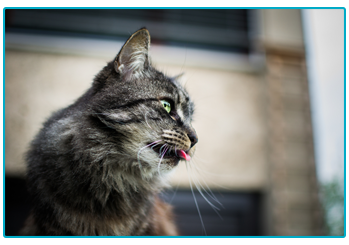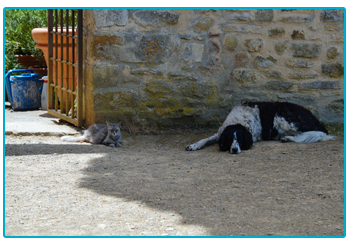In the long, dark winter months it can be easy to forget just how beautiful a British summer can be. Longer days, better weather, gardens in bloom and the air alive with the buzzing of bees and the smell of honeysuckle. Summer is the time to start getting excited about life and planning our next adventures and it’s no different for our pets. The warmer weather can be exciting for them but it can also pose a risk for cats and dogs during the summer months. We spoke to our pet health expert to find out more about a particular heat-related problem.

It’s getting hot in here
We’ve already had a couple of unexpected heatwaves this year but the weather doesn’t necessarily have to be soaring for our pets to be affected, even being left in a car or a poorly ventilated room can cause cats and dogs to overheat. It can also occur through overexertion, after an intense period of exercise, something that can easily happen once your pets begin bounding around in the warm summer weather.
So what is heat stroke?
Heat stroke occurs when the internal body temperature is raised above the normal range (hyperthermia), which causes damage to the tissues in the body. This occurs when the body is exposed to temperatures high enough that it is unable to lose as much heat as it generates. Cats and dogs don’t sweat like humans, they have to rely on the evaporation of water from their tongue, mouth, nose and, to an extent, their feet in order to cool down.

Breeds to watch out for
Certain breeds are more at risk of heat stroke, namely brachycephalic breeds such as Persian cats, Pugs and French Bulldogs. Overweight animals, young or old cats and dogs and those with thick coats or respiratory and cardiovascular problems are particularly susceptible. It’s extremely important that owners of these breeds make sure that their pet is kept cool during summer hot spells. Even a small rise in temperature can have a significant effect on metabolic processes within the body.
Symptoms of heat stroke
In severe cases, heat stroke can cause seizures or a coma, so it is worth being aware of the symptoms. Excessive panting and salivation could be early indicators of heatstroke but there are other warning signs that you should look out for, such as:
- Increased heart rate
- Respiratory distress
- Agitation
- Lethargy or collapse
- Vomiting or diarrhoea
- Decreased urination
- Muscle tremors

Prevention measures
There are many ways in which you can stop your cat or dog from overheating, most of which are just simply common sense. Your pets should always have access to clean, fresh drinking water. Never leave your pet in a car, as temperatures can rise rapidly, even on what might seem like a mild day. Provide areas of shade in which they can shelter and make sure any interior rooms are well ventilated. Avoid walking your dog during the hottest part of the day and on surfaces that may retain heat, such as sand or tarmac.
Despite all of this advice, and our best efforts, we can’t always watch our animals at all times. If you suspect that your cat or dog is suffering from heat stroke, remove them from the hot environment and apply cool, but not cold, water to the surface of their skin. You can use a fan to cool them down and always seek veterinary advice in these situations. Acting early could help you and your pet to avoid upsetting and costly medical treatment.
All content provided on this blog is for informational purposes only. We make no representations as to the accuracy or completeness of any information on this site or found by following any link on this site. We will not be liable for any errors or omissions in this information nor for the availability of this information. We will not be liable for any loss, injury or damage arising from the display or use of this information. This policy is subject to change at any time.


